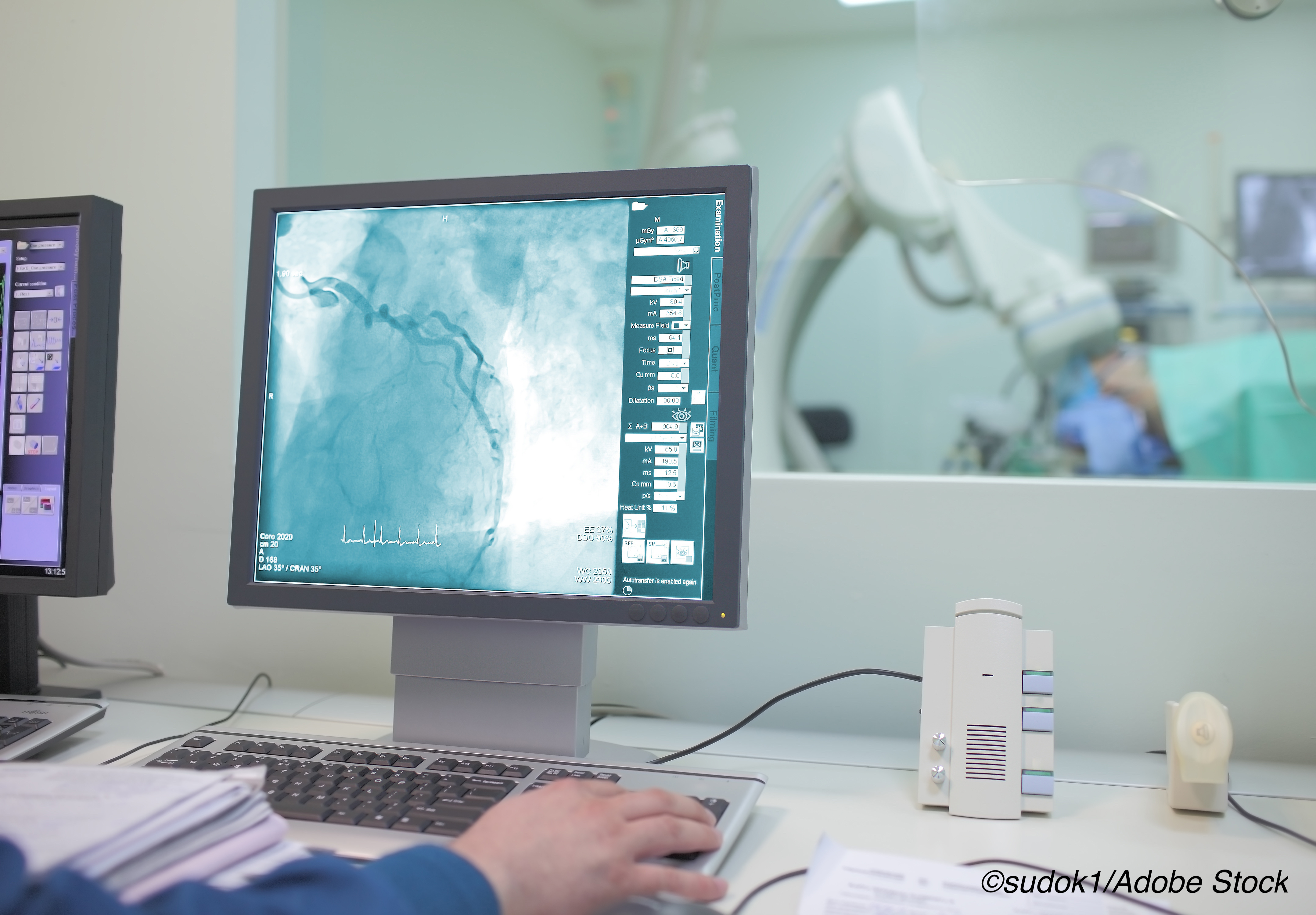Direct to angiography (DTA) led to faster treatment time and better clinical outcomes in patients with large vessel occlusion (LVO), researchers reported.
Among >1,000 patients with LVO shifted to endovascular thrombectomy (EVT) centers, the median transfer times were significantly shorter for patients treated with the DTA approach by approximately 46 minutes (2.13 hours) versus transfer times for patients who received repeated imaging at the EVT-capable center (2.90 hours, P<0.001), according to Amrou Sarraj, MD, of the University of Texas McGovern Medical School in Houston, and co-authors.
Additionally, three-month mortality was lower with DTA than in the repeat imaging group (17.0% vs 24.4%, respectively, P=0.008,), they wrote in JAMA Neurology.
“Although approximately three-quarters of patients with LVO transferred for EVT in our cohort received repeated imaging, our findings show that bypassing repeated imaging and moving directly to EVT resulted in faster time from EVT center arrival to groin puncture (by 26 minutes overall) and better clinical outcomes,” the authors explained, concluding that the “DTA approach may be associated with faster treatment and better functional outcomes during all hours and treatment windows, and repeated imaging may be reasonable with prolonged transfer times.”
The findings are in line with those from the ANGIO-CAT trial, which also favored the DTA approach, pointed out Bruce C. V. Campbell, MBBS, BmedSc, PhD, of the Royal Melbourne Hospital in Parkville, Australia, in an editorial accompanying the study.
However, “[i]nterpretation of these results is potentially complicated by the observational nature of the study,” he wrote. The stated aim of repeat imaging “is to ensure an ongoing target for EVT and reduce adverse or futile outcomes by excluding patients with large established infarcts that may have progressed during interhospital transfer,” Campbell said, but it’s not certain if that goal is actually achieved. And “there was no difference in symptomatic hemorrhagic transformation rates” in the current trial or in ANGIO-CAT, “suggesting that exclusion of patients at risk of a poor outcome had a limited effect on patient safety.”
Finally, given the increasing sophistication of imaging, such as flat-panel perfusion CT imaging in the angiography suite, clinicians “should critically challenge what difference repeated imaging would make to management of the individual patient… and balance that against the detrimental effect on functional outcome incurred by delaying reperfusion to repeat imaging.”
Sarraj’s group conducted a pooled retrospective cohort study at six U.S. and European comprehensive stroke centers, enrolling 1,140 adults (median age 69; 46.4% female) with anterior circulation LVO (internal cerebral artery or middle cerebral artery subdivisions M1/M2) who were transferred for EVT within 24 hours of the last-known-well time. The study was conducted from January 2014 through February 2020.
Functional independence, based on 90-day modified Rankin Scale (mRS) score of 0-2, was the primary outcome, while “[s]ymptomatic intracerebral hemorrhage, mortality, and time metrics were also compared between the DTA and repeated imaging groups,” the authors said.
They reported that DTA was faster to EVT than imaging to EVT overall and remained so in both regular and on-call hours.
Also, three-month functional independence was higher with DTA overall (52.6% vs 37.0%, adjusted odds ratio 1.85, 95% CI 1.33 to 2.57, P<0.001) and during regular hours (53.8% vs 40.4%, P=0.008), as well as on-call hours (51.5% vs 34.8%, P<0.001), they wrote.
“This finding may be related to the fact that prehospital notification of the interventional team plausibly resulted in being on-site at the time of the patient’s arrival,” the authors explained. “However, our study shows that bypassing repeated imaging and transferring the patient directly to the angiography suite is feasible at all times and is not limited to work hours.”
Among all patients, 54.6% arrived at the EVT center in the early window (0-6 hours) versus 45.4% who arrived in the late window, but the results did not vary by time windows, Sarraj and co-authors reported (P=0.88 for interaction).
But a 10-minute increase in EVT-center arrival to groin puncture in the repeated imaging group correlated with 5% reduction in the functional independence odds (aOR 0.95, 95% CI 0.91 to 0.99, P=0.01),” the authors found.
They also found the rates of mRS score decreased with interfacility transfer times of the DTA group (59.6% for < hours vs 35.7% for ≥3 hours, P=0.006), but that was not the case with the repeat imaging group (36.1% vs 37.0%, respectively, P=0.85).
Study limitations included the lack of randomization, the possibility of selection bias, and the fact that the findings could be specific to the included individual centers.
Sarraj’s group noted that the RACECAT trial in Spain tested the “drip and ship model,” in which patients with suspected LVO were given in-field triage and sent “directly to EVT centers compared with triage to the nearest stroke center with secondary transfer to the EVT center if necessary.”
That trial “showed no difference between these approaches, suggesting that the drip and ship model will be maintained for now. This emphasizes the need for optimal protocols for smooth interfacility transfers and expedited workflow to the angiography suite after arrival to EVT centers,” according to Sarraj and co-authors.
-
Direct to angiography (DTA) was associated with faster times from arrival to groin puncture and better functional and safety outcomes, overall and in both early and late windows.
-
Bypassing repeated imaging and moving directly to endovascular thrombectomy EVT centers resulted in faster time from EVT center arrival to groin puncture and better clinical outcomes.
Shalmali Pal, Contributing Writer, BreakingMED™
Sarraj reported relationships with, and/or support from, the SELECT and SELECT 2 trials/University of Texas McGovern Medical School/Stryker and Stryker. Co-authors reported relationships with, and/or support from, Frazer, Stryker, Scientia, Viz.ai, Medtronic, MicroVention, Penumbra, Siemens AG, Cerebrotech Medical Systems, Balt, Johnson & Johnson Services, Siemens, Cerenovus, GE Healthcare, Genentech, Proximie, NovaSigna, Philips NV/WeTRUST study, Anaconda BioMed, Methinks; and Apta Targets.
Campbell reported support from the National Health and Medical Research Council of Australia.
Cat ID: 254
Topic ID: 253,254,254,570,578,730,8,38,192,925


